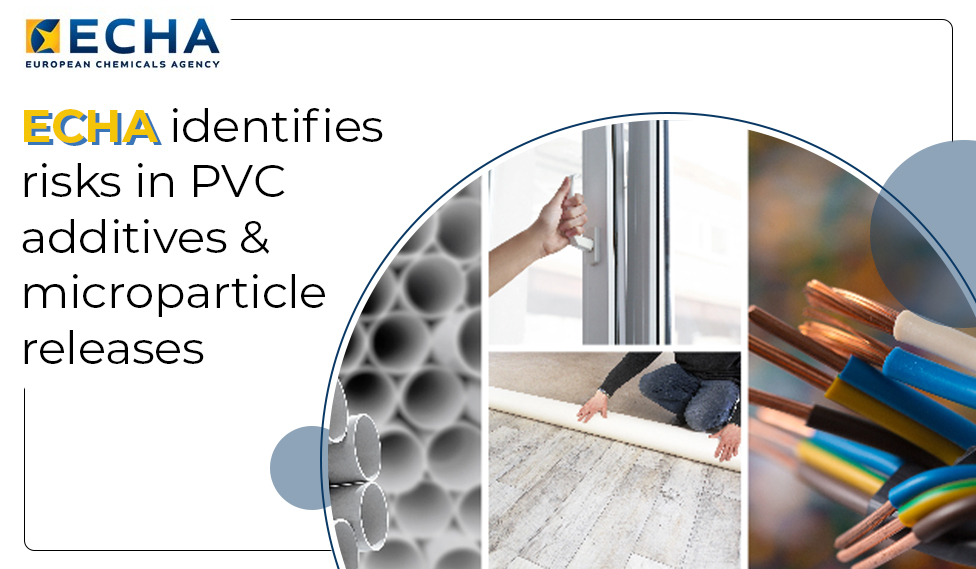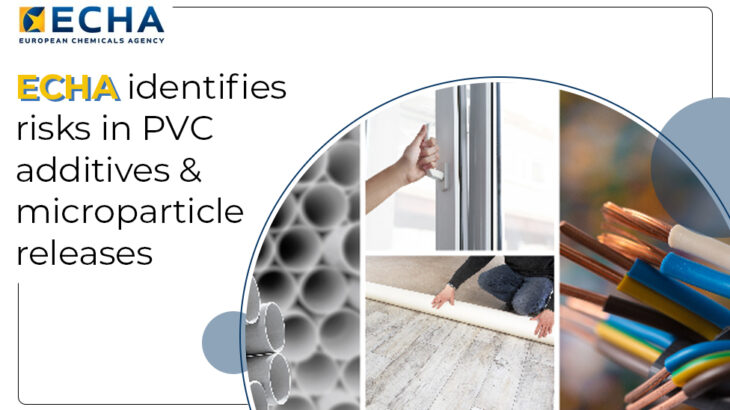
European Chemicals Agency (ECHA) is one of the critical players who address environmental concerns through plastic exposure globally. As society faces the consequences of plastic pollution, ECHA has again come up with another regulation on plastic exposure to safeguard and promote sustainability worldwide. In this blog post, we will explore the role of ECHA in shaping the future of plastics and the implications for industries and consumers alike.
What Is PVC Microparticle Release?
PVC, or Polyvinyl chloride, is one of the most globally used synthetic plastics because of its durability and versatility. These substances are used in various applications, such as packaging materials, pipes, clothing, and cables. PVC products are not typically made of pure PVC resin alone; they often contain additives to enhance their properties. These additives can include plasticizers, stabilizers, lubricants, and pigments.
Microparticle releases here refer to the generation of tiny particles, often microscopic, during the use, degradation, or disposal of PV and other plastic products. These microparticles can include fragments of the plastic itself or additives incorporated into the material. When released into the environment, microparticles can contribute to pollution and may have ecological implications.
Update On PVC & Microparticle release By ECHA:
As of November 28, 2023, at the command of the European Commission, ECHA collected information concerning potential risks associated with PVC and PVC additives to the environment and human health. Furthermore, ECHA explored alternative options for depreciating PVC additives and evaluated potential risk management measures concerning society.
ECHA studied around 63 PVC types of additives, encompassing heat stabilizers, flame retardants, and plasticizers. However, the key findings of the PVC additives assessment indicate that regulatory measures will be needed,
- To reduce the risks linked to plasticizers, especially specific ortho-phthalates known for their reproductive harm.
- To mitigate the potential hazards of heat-stabilizing organotins, like DOTE, related to reproductive harm and developmental malformations.
- To reduce the flame retardant emission per the ECHA’s Regulatory Strategy for Flame Retardants.
- To enact and enhance technologies to reduce the emission of microparticles from PVC, especially in facilities such as recycling and landfills. The discharge of PVC microparticles is a significant contributor to plastic pollution. These microparticles harbor detrimental additives; thus, mitigating their release would consequentially decrease the emissions of these harmful additives.
Future Action:
The company’s existing working conditions and preventive measures are sufficient to manage the risks associated with PVC resin for the environment and workers. However, the PVC analysis is made from the materials involved in PVC resin production, waste disposal, exposure to PVC dust, and the manufacturing process. The findings of ECHA’s investigation have been sent to the European Commission for assessment, and a decision will be made on formally requesting ECHA to prepare a REACH restriction proposal.
The European Chemicals Agency (ECHA) addresses these concerns through regulations like REACH (Registration, Evaluation, Authorization, and Restriction of Chemicals). ECHA works to identify and regulate hazardous substances, including those used as additives in PVC, to minimize potential risks to human health and the environment. Additionally, ongoing efforts are to develop sustainable practices and alternatives that reduce the environmental impact of PVC and its associated additives. Approach Sunstream to align your supply chain for conflict mineral compliance, SDS, and REACH.




 +1.585.935.7123
+1.585.935.7123 +91-804-148-6861
+91-804-148-6861